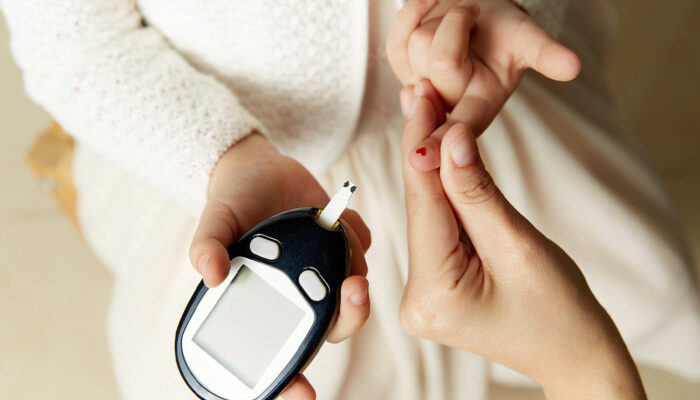8 warning signs of bladder cancer

Bladder cancer is a type of cancer that begins in the bladder, the organ that is responsible for storing and expelling urine. While bladder cancer may not always show warning signs and symptoms in its early stages, there are crucial signs that, if recognized early, can lead to timely diagnosis and increased chances of an effective treatment. Hence, individuals must be aware of certain warning signs that may indicate bladder cancer, such as the following.
Blood in urine
Blood in urine, clinically known as hematuria, can occur in visible or microscopic forms. In cases of visible blood (also called gross hematuria), one might notice an unusual pink, red, or brownish discoloration in their urine, which may indicate the presence of blood. Microscopic hematuria (also called microhematuria) indicates that blood in the urine is not visible to the naked eye. It can only be detected through laboratory tests, which emphasizes the need for regular checkups. It is also important to note that the presence of blood in urine does not definitively point to bladder cancer. It may also be due to bladder or kidney stones, intense exercises, kidney injury, or urinary tract infections. Regardless, it is still a matter of serious concern and requires immediate medical attention.
Change in the frequency of urination
A sudden change in the frequency of urination can also signify an underlying issue. If one finds themselves needing to urinate more frequently and is also experiencing a heightened sense of urgency to urinate, they must consult a healthcare professional. While these changes may seem benign, they could be indicative of a medical condition, including bladder cancer.
Difficulty in urinating
Experiencing difficulty in urinating can be a distressing symptom, and it may indicate bladder cancer. One may find themselves struggling to pass urine due to experiencing pain or a burning sensation during urination. While these signs can also indicate other medical conditions, such as bladder stones, one must not overlook them and consult a medical professional at the earliest.
Pain in the lower back
Experiencing pain in the lower back, particularly on one side, may indicate that bladder cancer is at an advanced stage. This discomfort may suggest that the cancer has spread or the tumor has grown. Although lower back pain can arise from different reasons, if it persists and is accompanied by other symptoms, it is crucial to consult a healthcare professional for a thorough assessment.
Loss of appetite
A loss of appetite could also be a sign of an advanced stage of bladder cancer or that the disease may be spreading. Since loss of appetite can occur due to various medical conditions, one must not draw conclusions and seek guidance and examination from a medical professional for a clear picture.
Swelling in the feet
The cancer cells present in the bladder may hinder or prevent the drainage of lymphatic fluid. Due to this, fluid might accumulate and build up in certain areas of the body, especially in the feet, and cause swelling. If one notices their feet swelling up unusually, they should consult a medical professional and get examined.
Weakness and fatigue
Generalized weakness and fatigue can be common symptoms of various medical conditions, including bladder cancer. If one notices this symptom occurring with other warning signs, they must seek immediate medical attention.
Bone pain
Bladder cancer can spread to the bones as it advances, leading to pain. This pain can be either a dull ache or a sharper, more noticeable sensation. If an individual experiences persistent bone pain, especially along with other warning signs, they should consult a medical professional.
Diagnosis
Medical professionals may suggest the following diagnosis techniques to detect bladder cancer.
Urinalysis and cytology
Urinalysis refers to the examination of urine, which involves analyzing a urine sample to detect blood or other indicators that may suggest the presence of bladder cancer. Besides this, doctors may also suggest cytology, in which medical professionals examine urine cells under a microscope to check for the presence of cancer.
Cystoscopy
Cystoscopy is an examination procedure that includes inserting a slender, flexible tube with a light and camera into the urethra to look into the bladder. By allowing a visual inspection of the bladder’s interior, cystoscopy helps healthcare professionals identify the presence of cancer.
Imaging techniques
When it comes to diagnosing bladder cancer, imaging techniques are essential in providing a comprehensive view of the bladder and surrounding structures. Various imaging methods, such as CT scans, MRI, and ultrasound, are used to scan the bladder, ureters, and nearby organs. These techniques help assess the size, location, and potential spread of bladder cancer.
Recognizing the early signs is crucial for the early detection of bladder cancer. Additionally, one must realize the importance of regular body checkups and timely consultation with healthcare professionals to detect the condition early and begin prompt management and treatment. A proactive approach to healthcare, recognizing symptoms, and seeking timely guidance can significantly impact one’s well-being. It is also crucial to understand that the signs mentioned above can also be caused by other conditions, so it is essential to consult a healthcare professional for a proper diagnosis.

